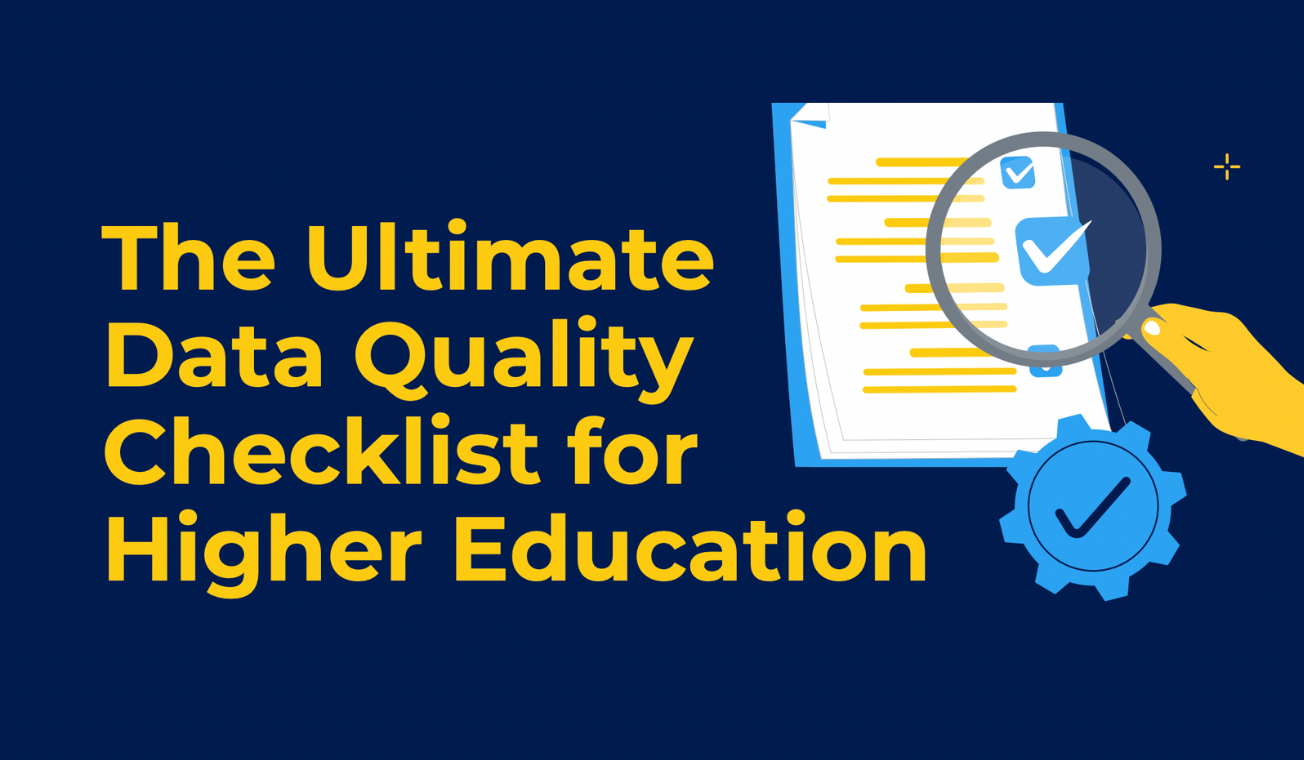Your data is your most valuable asset, and as an IT leader, you are at the forefront of ensuring it’s managed with precision and integrity.
How do you know that your data is as accurate, accessible, and helpful as possible? There are core principles that can guide you.
In this blog, we’ll dive into the five key pillars of a strong data governance framework specifically for higher education and how you can achieve those principles.
What are the 5 pillars of data governance framework in higher ed?
These pillars include:
- Quality,
- Accessibility,
- Compliance,
- Data infrastructure,
- And transparency.
1. Quality
Data quality is the bedrock of any effective data governance strategy. The highest quality data comes from effective internal processes and practices to ensure consistency and integrity.
Ensuring data consistency across all platforms is critical to maintain quality. Consistent data means that information such as student names, grades, and other records match up across different systems and databases.
Focus on these aspects to ensure your data quality:
- Standardization: Implement data standards to maintain uniformity across platforms.
- Validation: Regularly audit data for consistency and rectify discrepancies promptly. Avoid waiting until the end of each semester to audit. Ideally, your ETL tool will allow you to easily review data near real-time.
2. Accessibility
Accessible data is crucial for timely decision-making and operational efficiency. Ensuring that data is available in near real-time and up-to-date allows institutions to act swiftly and effectively.
Here are three principles to keep in mind in order to make data more accessible:
- Near real-time access: Implement systems that provide near real-time data access to relevant stakeholders.
- Timely delivery: Ensure that data is delivered to decision-makers promptly, allowing them to act while the information is still relevant.
- User-friendly platforms: Develop user-friendly data platforms that make it easy for non-technical users to access and consume data.
3. Compliance
This pillar involves implementing comprehensive data policies and ensuring that all organizational data-handling practices meet regulatory standards.
Keep these principles in mind to ensure your data is in compliance with state and federal laws:
- Policies: Develop and enforce data policies that outline how data should be handled, including retention periods, access controls, and compliance with regulations such as FERPA and GDPR.
- Role-based access: Implement role-based access controls to ensure that only authorized personnel can access sensitive data.
- Data masking: Use data masking techniques to protect personally identifiable information (PII) when sharing reports.
- Regulatory compliance: Every state, province, and country has different regulations in regard to data. Stay informed about regulations and ensure your institution’s practices comply with all relevant laws.
4. Data Infrastructure
Effective data governance requires the ability to extract data from various sources and unify it into a cohesive, integrated warehouse. This eliminates data silos and allows for comprehensive data analysis.
Make sure that you have data solution tools that allow your institution to achieve the following:
- Unification: Implement data management tools to extract and unify data from multiple source systems into a modern data warehouse. This will break down data silos to ensure that information is readily available and can be combined to provide a complete picture.
- Aggregated data analysis: Your data management solution l should not only aggregate data, but place it into a neutral data model, so once it’s been landed in a data warehouse, your BI tools can be leveraged to identify trends in the data and make informed strategic decisions.

5. Transparency
Transparency in data governance ensures that stakeholders understand how data is gathered, used, and shared. It builds trust and facilitates more effective data-driven decision-making.
Here’s how you can achieve data transparency with your stakeholders:
- Clear communication: Share information about data collection methods and data-sharing practices with stakeholders.
- Stakeholder engagement: Involve stakeholders in data governance processes to ensure their needs and concerns are addressed.
- Visibility into data use: Provide visibility into how data is used to drive decisions, such as analyzing student performance trends to improve educational outcomes.
How to improve your data governance practices

Implementing a robust data governance framework based on these five pillars—Quality, Accessibility, Compliance, Data Extraction/Aggregation/Unification, and Transparency—will empower your institution to leverage data effectively while maintaining the highest standards of data management.
By fostering a culture of data excellence, you can ensure that your institution not only meets regulatory requirements but also harnesses the power of data to drive strategic decisions and enhance student success.
If you’re interested in learning more about strengthening your data governance framework, consider speaking with an expert about Scaffold DataX.







